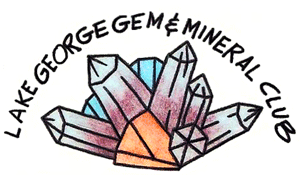Notes: The Greek name for beryl is beryllos, which means precious blue-green color or seawater stone (Chesterman, 1990). Beryl forms in pegmatites and some metamorphic rocks. Gem quality beryl is known by these colors and names: green beryl is emerald (from presence of chromium and vanadium), light blue beryl is known as aquamarine; colored by manganese, pink to light purple beryl is called morganite; yellow beryl is called golden beryl, colorless beryl is known as goshenite (Hall, 2002).
 |
| This beryl crystal was found in Park County, Colorado. Image by the author. |
The gem fields of Mount Antero, Chaffee County, Colorado (USA) produce excellent aquamarine specimens. Beryl specimens can also be found in Park County, Colorado. Beryl is the source of beryllium, a light metal used for many things such as: x-ray tubes, missiles, and space vehicles (Chesterman, 1990).
FACTS ON FILE:
Composition: Beryllium aluminum silicate
Color: Green, blue, greenish-blue, yellow, red, pink, white, and colorless
Luster: Vitreous
Streak: Colorless
Hardness: 7.5-8
Crystals: Hexagonal
Transparency: Transparent to translucent
Specific gravity: 2.7-2.9
Cleavage: Indistinct
Fracture: Uneven to conchoidal
A Beryl Haiku:
Blue like an ocean
Yellow like the sun that shines
Green like a forest
About the Author:
Steven Marquez is an Earth Science Scholar with the Colorado Springs Mineralogical Society (Colorado, USA). He is a volunteer in the mineral section of the Cripple Creek District Museum. Steven enjoys studying minerals and field work. He is in 8th grade.
References Cited
Chesterman, C. W. (1990). The Audubon Society Field Guide to North American Rocks and Minerals. New York: Alfred A. Knopf.
Hall, C. (2002). Smithsonian Handbooks: Gemstones. New York: Dorling Kindersley.


